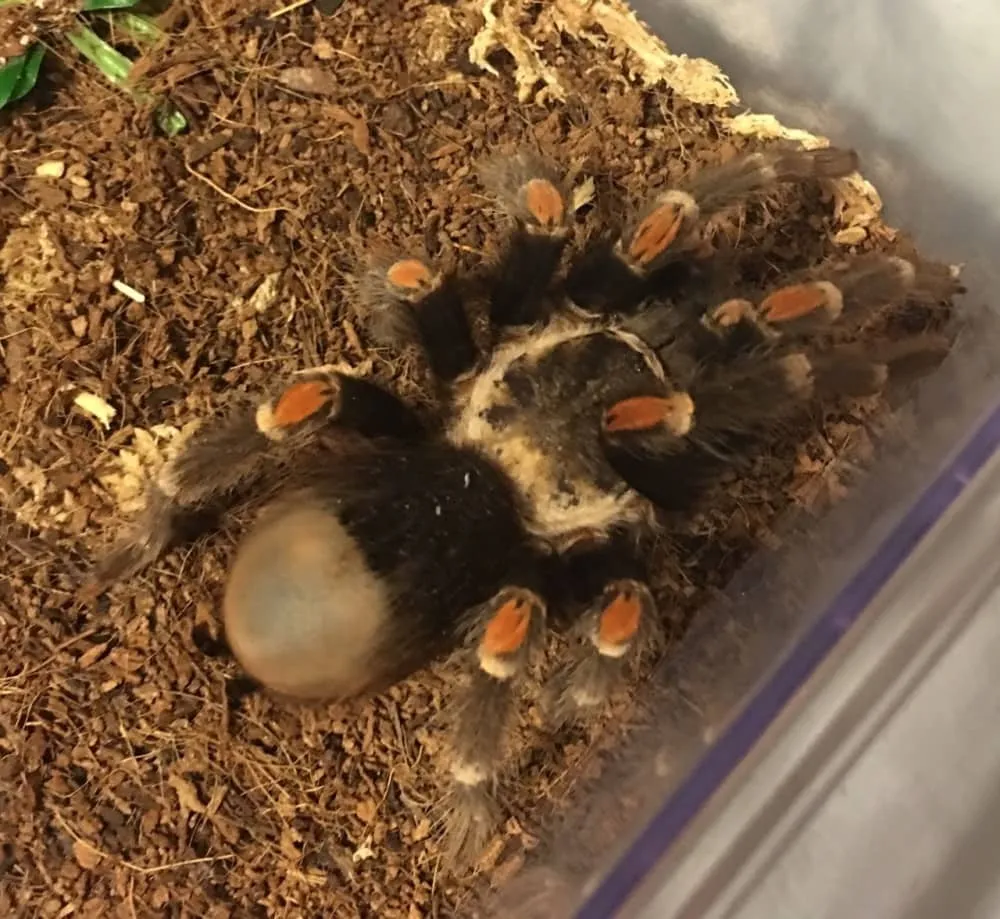What is Molting in Tarantulas
Molting is a fundamental biological process for tarantulas, a necessary part of their growth and development. Unlike mammals, tarantulas and other arthropods have an exoskeleton, a hard outer shell that protects their bodies. This exoskeleton, however, doesn’t grow. As the tarantula grows, it outgrows its exoskeleton, and molting is the process by which it sheds the old one and reveals a new, larger one. Understanding molting is crucial for tarantula owners because it’s a vulnerable time for the spider and knowing what to expect can help ensure the tarantula’s health and well-being. The frequency of molting varies depending on the tarantula’s age, species, and environmental conditions, but it’s a regular occurrence throughout its life.
The Molting Process Explained
The molting process is a complex and fascinating event. It’s a multi-stage process that starts with the formation of a new exoskeleton under the old one. The tarantula will secrete enzymes between the old and new exoskeletons, separating them. The spider will then absorb fluids to increase its internal pressure, causing the old exoskeleton to split open. This split usually occurs along the carapace, the top part of the cephalothorax. The tarantula then slowly wriggles out of the old exoskeleton, a process that can take several hours. Once free, the tarantula is incredibly vulnerable, with a soft, pliable new exoskeleton that will harden over the next few days or weeks. It’s a remarkable display of nature’s ingenuity, allowing the tarantula to grow and thrive.
Pre-Molt Signs
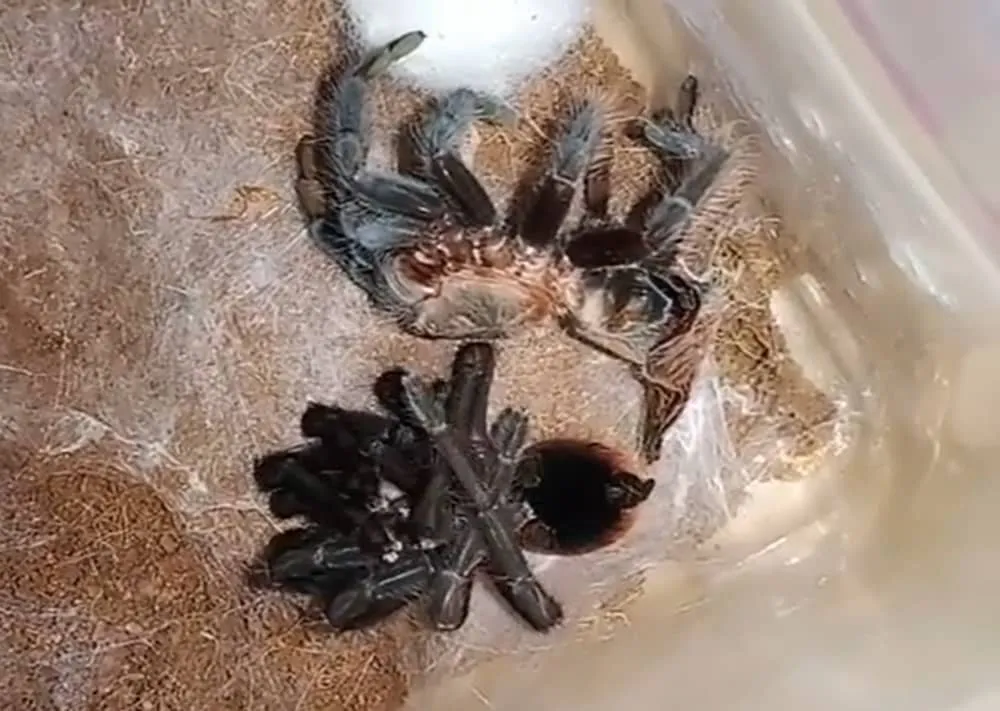
Recognizing the signs of an impending molt is important for tarantula owners. These signs can help you prepare and provide the right environment for your spider. One of the most common signs is a darkening of the abdomen. The tarantula’s abdomen will often appear darker, almost black, as the new exoskeleton forms beneath. The tarantula may also become less active, spending more time hiding in its burrow or enclosure. Another sign is a loss of appetite. Tarantulas typically stop eating a few weeks before they molt. You might also notice the tarantula’s abdomen becoming more plump or swollen as it prepares for the process. Observing these changes can help you anticipate the molt and provide the best possible care.
During the Molt
During the molt itself, it’s crucial to avoid disturbing the tarantula. The process can be stressful, and any disturbance can potentially harm the spider. The tarantula will typically lie on its back, or sometimes on its side, as it works to shed its old exoskeleton. This can be a startling sight for owners, but it’s perfectly normal. It’s important not to interfere or try to help the tarantula, as this could injure it. The entire molting process can take anywhere from a few minutes to several hours, depending on the size and species of the tarantula. Patience is key during this time. Once the old exoskeleton is shed, the tarantula will remain in a vulnerable state for a few days or weeks as its new exoskeleton hardens.
Post-Molt Care
Post-molt care is just as critical as pre-molt preparation. The tarantula’s new exoskeleton is soft and fragile, making the spider vulnerable to injury. Provide a calm and undisturbed environment. Avoid handling the tarantula or making any sudden movements near its enclosure. Ensure the tarantula has access to fresh water. The spider may be thirsty after molting. Do not feed the tarantula immediately after molting. Wait a week or two to allow its fangs to harden, and offer a smaller meal than usual to avoid stressing the spider. Observe the tarantula for any signs of problems, such as difficulty moving or eating. If you notice anything unusual, consult with a veterinarian or experienced tarantula keeper.
Why Do Tarantulas Molt
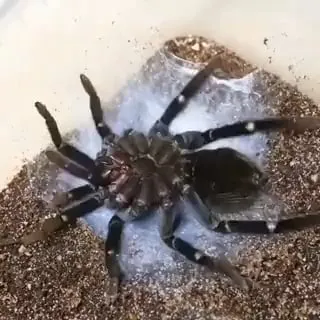
The primary reason tarantulas molt is to grow. Their exoskeleton doesn’t expand, so they must shed it to create a larger one. Molting allows them to increase in size, but it also serves other important functions. The process replaces damaged or worn-out body parts. As tarantulas move through their environment, they can lose setae (hairs) or damage their exoskeletons. Molting allows them to regenerate these structures and maintain their overall health. Furthermore, molting removes parasites and other external organisms that may be attached to the tarantula. It’s essentially a complete renewal, allowing the spider to stay healthy and continue its life cycle. Each molt brings the tarantula closer to adulthood, where the frequency of molting decreases.
Growth and Development
Molting is directly linked to the tarantula’s growth and development. Young tarantulas molt frequently, sometimes every few weeks or months, as they rapidly increase in size. As they mature, the molting frequency decreases. Adult tarantulas may only molt once or twice a year. The frequency of molting is a good indicator of the tarantula’s age and overall health. With each molt, the tarantula gains size and strength, becoming more capable of hunting and surviving in its environment. The molting process is an essential part of the life cycle, from the tiny spiderling to the fully grown adult. Careful observation of molting patterns can provide valuable insights into a tarantula’s health and well-being.
Shedding Old Exoskeleton
The process of shedding the old exoskeleton is also a way for the tarantula to get rid of any external parasites or waste that has accumulated on its body. This includes any mites, fungi, or other organisms that may have attached themselves to the exoskeleton. The molting process essentially provides a fresh start, removing any potential health threats and allowing the tarantula to start with a clean slate. The discarded exoskeleton, or exuvia, can also provide clues about the tarantula’s health. By examining the exuvia, owners can sometimes detect problems such as mites or other issues. It’s a fascinating process that demonstrates the tarantula’s remarkable ability to regenerate and maintain its health.
Factors Affecting Molting Frequency
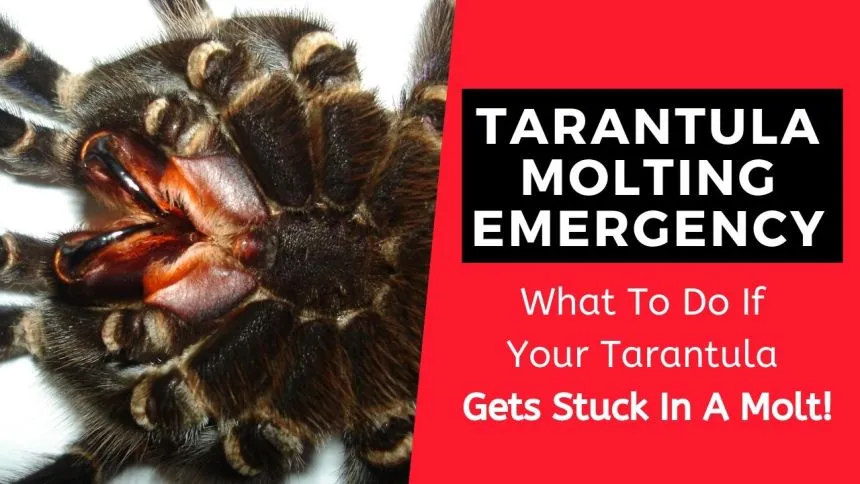
Several factors influence how often a tarantula molts. Understanding these factors can help owners provide the best possible care. The frequency of molting is not always consistent, and it is affected by several variables. These factors can help you understand why molting frequency varies. The most common factors include age, feeding habits, and environment, all of which play a crucial role in the tarantula’s molting schedule. By taking these factors into consideration, you can anticipate and accommodate your tarantula’s molting needs, which contributes significantly to their overall well-being and longevity.
Age
Age is a major determinant of molting frequency. As mentioned previously, young tarantulas, or spiderlings, molt much more frequently than adults. This rapid molting rate allows them to grow quickly. Spiderlings may molt every few weeks or months, depending on the species and their individual growth rate. As tarantulas mature, the molting frequency decreases. Sub-adults may molt every six months to a year. Fully grown adults molt less often, sometimes only once a year or even less. The molting frequency slows down as the tarantula reaches its full size. The decline in molting frequency is a natural part of the tarantula’s life cycle, indicating that they are no longer actively growing.
Feeding
Feeding habits also play a role in molting frequency. A well-fed tarantula will generally molt more frequently than one that is underfed. The availability of food provides the necessary nutrients for growth, which in turn stimulates molting. Overfeeding, however, can also be problematic. Providing too much food can lead to obesity, which may negatively affect the molting process. A balanced diet and appropriate feeding schedule are crucial for promoting healthy molting. The type of food also has an impact. Providing a varied diet with appropriate nutrients is important. It’s essential to provide the tarantula with a healthy diet to support the molting process and maintain the spider’s overall health.
Environment
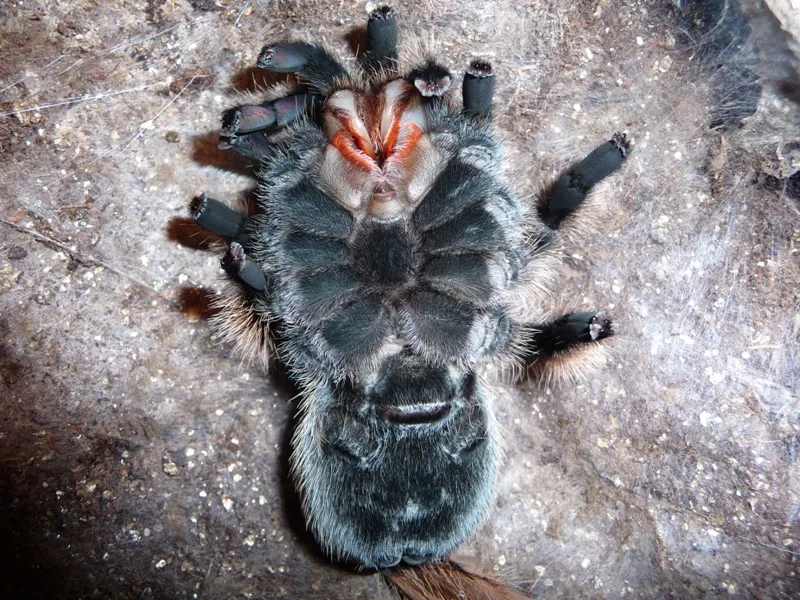
The environment in which the tarantula lives also influences molting frequency. Temperature and humidity play a significant role. Maintaining the appropriate temperature and humidity levels for the species of tarantula is important. A consistent environment helps to regulate the tarantula’s metabolism and promotes healthy molting. Stressful conditions can also affect molting. Any environmental stressors, such as a lack of hiding places or excessive handling, can disrupt the molting process. Providing a secure and comfortable environment is essential for successful molts. An appropriate and stable environment is crucial for the tarantula to molt safely and on schedule, contributing to its overall well-being and longevity.
Common Molting Problems
While molting is a natural process, sometimes things can go wrong. Understanding these common problems and how to address them can help ensure the tarantula’s well-being. It is important to be informed on the potential complications that could arise. There are two main potential issues that can arise during the molting process, which are: stuck molt and leg loss. Being aware of these potential issues can help tarantula owners respond appropriately and provide the necessary care.
Stuck Molt
A stuck molt, also known as a failed molt, is a serious problem where the tarantula cannot fully shed its old exoskeleton. This can occur for various reasons, including low humidity, dehydration, or underlying health issues. A stuck molt can be fatal if not addressed. You may notice that the tarantula is struggling to free itself from the old exoskeleton. If you suspect a stuck molt, it’s important to carefully assess the situation. You can gently mist the tarantula and its enclosure to increase humidity. It is very important not to pull at the exoskeleton, as this can injure the tarantula. If the tarantula is still struggling, it’s best to consult with a veterinarian or experienced tarantula keeper. This could save the spider’s life.
Leg Loss
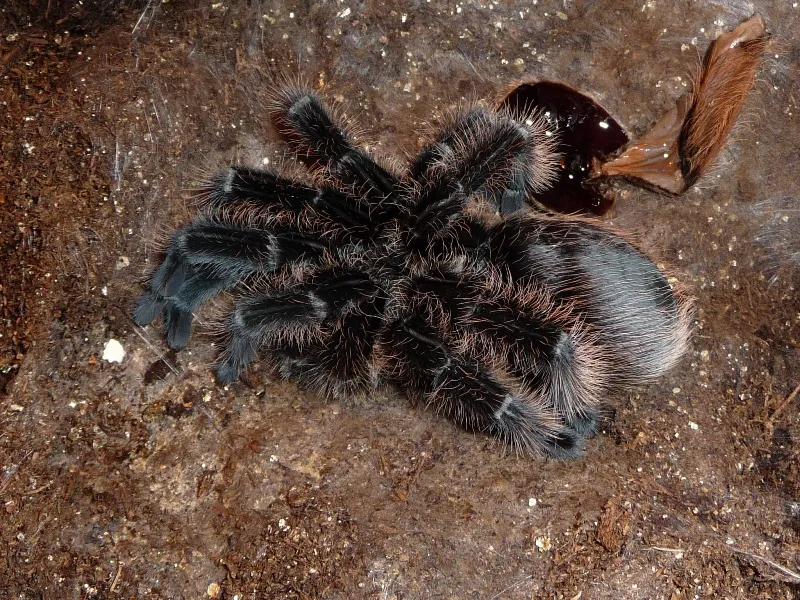
Leg loss is another potential issue during molting. A tarantula may lose a leg or legs if the molting process is disrupted or if the tarantula is stressed. This can happen if the tarantula is disturbed during molting or if the conditions aren’t ideal. While leg loss can be alarming, tarantulas can often regenerate lost limbs over time. The new leg will typically grow back with the next molt, although it may be smaller than the original. It’s important to ensure the tarantula has a safe and undisturbed environment after a leg loss to allow it to recover. Provide proper care and consult an expert if needed to facilitate the healing process and ensure the tarantula’s well-being.
How to Help Your Tarantula During Molting
While you shouldn’t interfere directly with the molting process, there are things you can do to create a supportive environment for your tarantula. Providing the right conditions can significantly increase the chances of a successful molt. By providing a secure environment and avoiding disturbances, you can contribute to your tarantula’s well-being. Creating a supportive environment can significantly help during the molting process. In many cases, creating the proper environment is all that is needed. However, in some cases, expert consultation may be needed. This process is a delicate one, so it is best to observe and facilitate. Here are some recommendations to help.
Providing a Safe Environment
The most important thing you can do is to provide a safe and stable environment. Ensure the tarantula’s enclosure is clean and well-maintained. Maintain the appropriate temperature and humidity levels for the species. Provide a substrate that allows the tarantula to burrow if it chooses to do so, as this can help it feel more secure. Offer a hide or shelter where the tarantula can retreat during the molting process. Having a safe and secure environment can reduce stress. It is important that the tarantula feels safe. A secure environment will help the tarantula molt safely, which will contribute to its overall health.
Avoiding Disturbances
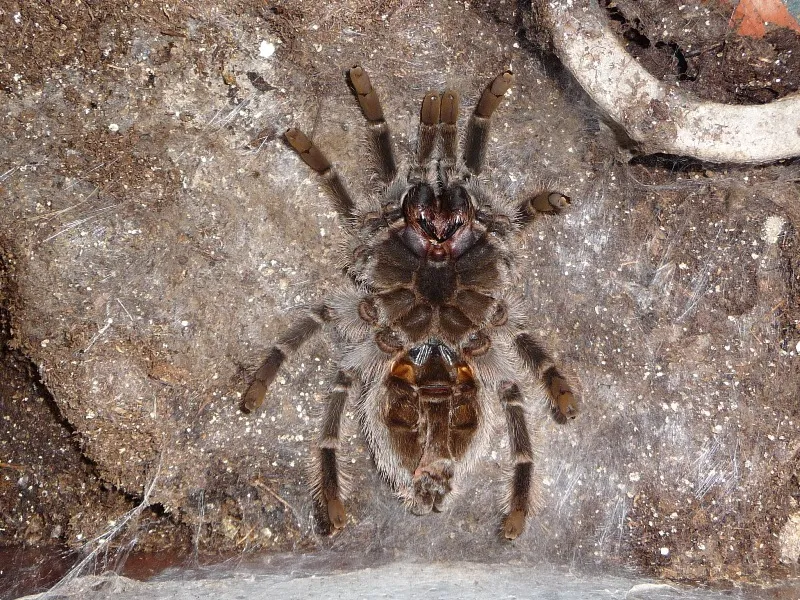
Avoid disturbing your tarantula during the molting process. This means refraining from handling the tarantula or making any sudden movements near its enclosure. Excessive noise or vibrations can also be disruptive. Keep the enclosure in a quiet location away from foot traffic or other sources of stress. Avoid direct sunlight or extreme temperature fluctuations. The best approach is to simply leave the tarantula alone and allow it to go through the molting process undisturbed. By minimizing stress and potential disturbances, you can help ensure a successful molt. This is the best way to ensure the tarantula’s well-being during molting and throughout its life.
